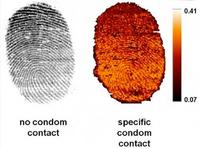-
Turning sport vehicle into military machine
U.K. companies to transform a proven sports vehicle into a high performance, off road vehicle for special forces, border patrol, reconnaissance, rapid intervention or strike roles; the Wildcat 500 DKR boasts high speed performance in harsh environments
-
-
Where have Libya's antiaircraft missiles gone?

U.S. government officials fear that more portable anti-aircraft missiles may have slipped into the wrong hands or been sold in the black market after rebels in Libya raided one of Colonel Muammer el Qaddafi’s munitions depots; late last month rebels captured the city of Ga’a which contained an ammunition depot that housed Man-Portable Air-Defense Systems, lightweight surface to air missiles known as Manpads; in the ensuing chaos, the depot was raided and crates of weapons disappeared with no record of where they went
-
-
Auto theft going extinct?

Thanks to aggressive police work and new technology car theft could eventually become an obsolete problem; new technological developments like high-tech keys, immobilizer systems, and GPS tracking have made it increasingly difficult for thieves to successfully steal cars; new police tactics and technologies like bait cars and license plate scanners have given law enforcement agencies the edge in tracking down stolen cars and catching thieves
-
-
Expanding Yuma flight testing schedule for Argus UAV
The World Surveillance Group (WSGI) revealed its plans of extending the flight testing schedule for its strange-looking Argus One UAV at the Yuma facilities at the U.S Army grounds in Arizona
-
-
New fingermarks detection technology

The new technology uses Matrix Assisted Laser Desorption Ionization Mass Spectrometry Imaging (MALDI-MSI) to provide crime scene investigators with key extra details about suspects; these details, such as any substances they might have touched, can provide crucial background information in a criminal investigation
-
-
Portable biometric system for police officers

Police now have a new low-cost, portable biometric tool in their arsenal to quickly and accurately identify a suspect: an Apple iPhone; using MORIS (Mobile Offender Recognition and Information System), an app developed by BI2 Technologies, police officers can now use an Apple iPhone to scan a suspect’s fingerprint or snap a photo of their face to scan their iris
-
-
Taser death leads to $10 million payout
The manufacturer of police Tasers recently awarded $10 million to a North Carolina family after a teenager was killed when he was shocked with a stun gun; Darryl Turner, a seventeen year old boy, died in a supermarket after a police officer shot him in the chest with a Taser Model X26 electronic control device in 2008
-
-
Sector Report for Tuesday, 26 July 2011: Law Enforcement Technology
This report contains the following stories.
Plus 1 additional story.
-
-
Gwinnet County, Georgia to issue instant e-tickets
In the past, in Gwinnet County, Georgia, like in many counties across the United States, residents would not see a traffic ticket on their records until several weeks later, but now thanks to new technology, police officers, fire marshals, and animal control agents will be able to issue and print citations immediately
-
-
Law enforcement and privacy concerns in Vancouver
Last month, the police in the otherwise sedate Vancouver had to use tear gas, pepper spray, and flash bombs in downtown Vancouver to try to disperse angry rioters who set cars on fire, looted stores, and taunted police officers after the Canucks’ 4-0 Stanley Cup final loss to the Boston Bruins; the police wants to use facial recognition technology to identify the rioters, but privacy advocates are worried
-
-
Law enforcement and privacy concerns in Massachusetts
Massachusetts has a plan: create a database which could map drivers’ whereabouts with police cruiser-mounted scanners that capture thousands of license plates per hour — and store that information indefinitely so local police, state police, federal agencies, and prosecutors could access it as they choose; privacy advocates are worried
-
-
Taser, Metal Storm collaborate on less lethal ammunition

TASER International has entered into a Memorandum of Understanding (MoU) with Metal Storm Limited and to develop and market TASER less-lethal ammunition for the Metal Storm MAUL weapon; Metal Storm’s MAUL weighs 800 grams can be fitted as an accessory to an assault rifle, or operated from its own shoulder stock or pistol grip attachments
-
-
FBI now free to search your trash?
FBI agents will soon have heightened investigative powers that would allow them to delve more deeply into databases, rummage through an individuals’ trash, or place surveillance teams on suspects; in the upcoming release of the Domestic Investigations and Operations Guide, the FBI’s manual, agents will be given greater leeway in searching for evidence of criminal or terrorist activity
-
-
New risk to first responders: chemical suicide
First responders and HAZMAT teams are becoming aware of a new threat: chemical suicide. This new type of suicide is increasing in popularity as a result of instructions being posted on the Internet; the suicide is carried out by mixing household cleaners and detergents to produce a cloud of toxic gas; trouble is, after killing its intended victim, the cloud of gas remains present, threatening to kill those who attempt a rescue
-
-
After FBI arrests LulzSec announces more cyber mayhem
In response to the FBI’s arrest of several hackers, the recently disbanded hacking group known as LulzSec has vowed to return and the group says it will renew its attacks on corporations and government agencies; the announcement comes after U.S. authorities arrested sixteen people last week in relation to the groups’ previous attacks which included bringing down PayPal’s website after it suspended its service to WikiLeaks
-
More headlines
The long view
Why Was Pacific Northwest Home to So Many Serial Killers?
Ted Bundy, Gary Ridgway, George Russell, Israel Keyes, and Robert Lee Yates were serial killers who grew up in the Pacific Northwest in the shadow of smelters which spewed plumes of lead, arsenic, and cadmium into the air. As a young man, Charles Manson spent ten years at a nearby prison, where lead has seeped into the soil. The idea of a correlation between early exposure to lead and higher crime rates is not new. Fraser doesn’t explicitly support the lead-crime hypothesis, but in a nimble, haunting narrative, she argues that the connections between an unfettered pollution and violent crime warrant scrutiny.
Bookshelf: Smartphones Shape War in Hyperconnected World
The smartphone is helping to shape the conduct and representation of contemporary war. A new book argues that as an operative device, the smartphone is now “being used as a central weapon of war.”
